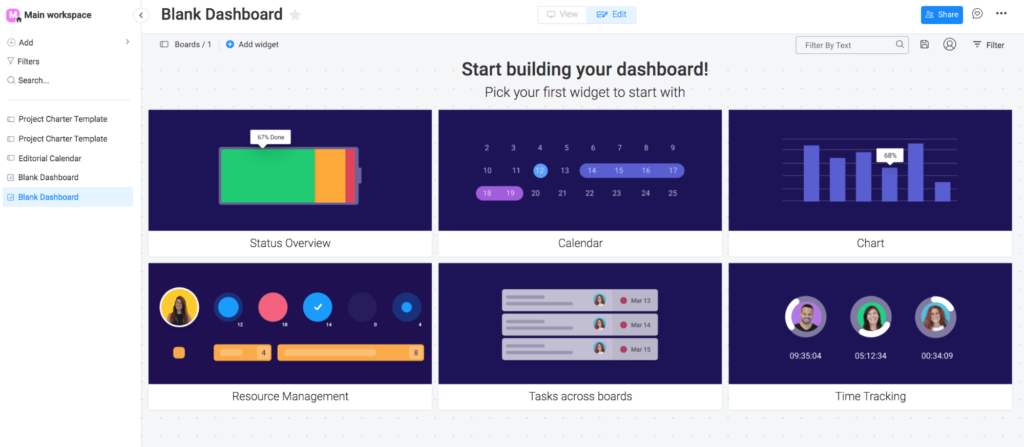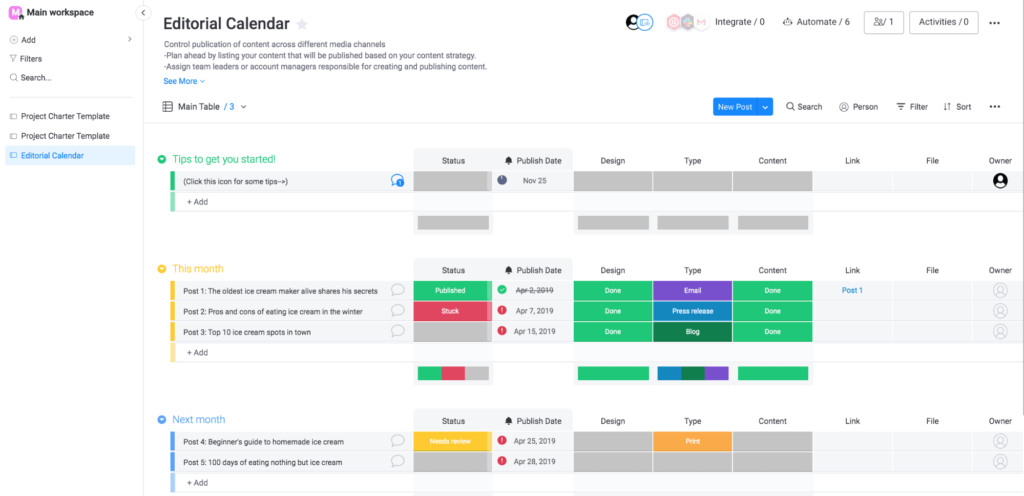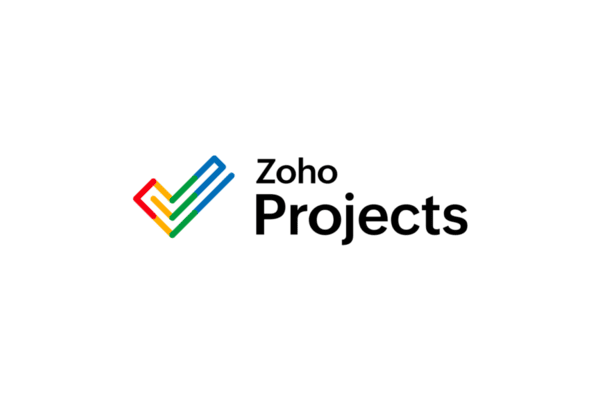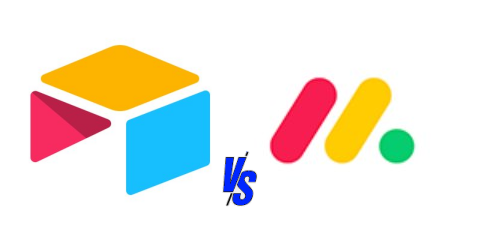editor’s take
In comparing Wrike vs monday, our review team found two very capable competitors. Both deliver intuitive, easily configurable project scheduling, tracking and collaboration environments — precisely what users should expect from two of the leading project management platforms on the market.
For me, the difference maker was Wrike’s paid plan; it delivers more value than monday’s basic tier. For less that a dollar more per user, teams who use Wrike access a robust collection of integrations, AI-driven work insights, and very importantly, included automations that help eliminate some of the repetitive work that bedevils even the most efficient PMs and their teams.
Net net: Wrike wins this round. And we look forward to watching two PM powerhouses continue their evolutions.
| Key Feature | Our Pick |
|---|---|
| Built-In Collaboration including task management and file sharing | Tie |
| Workflow Visualization (i.e., calendars, Kanban and Gantt charts) | Tie |
| Third-Party Integrations (i.e., Slack, Dropbox, Google Drive) |  Visit wrike |
| Free Plan |  Visit monday |
| Paid Plans |  |
Wrike and monday work management (often referred to as monday.com) are two of the best known names in project management software, and for good reason. Their robust scheduling and tracking abilities, intuitive user experiences, and easy integration with hundreds of other software solutions make them obvious choices for teams of all kinds.
Wrike vs. monday: Project Management Features Compared
Neither monday nor Wrike is considered to be strictly a project management platform. However, they still include many of the standard project and resource management features you’d expect from a full-scale PM platform like Microsoft Project or any of its competitors.
Team Collaboration

Our Pick: Tie
Most large projects require the cooperation and collaboration of an entire team of professionals. Both Wrike and monday are powerful collaboration tools, so it makes sense that some standard features are found across both platforms.
- Team training and onboarding: There are many Wrike tutorials and Monday tutorials online, so you’ll be able to train and onboard new project teammates with ease.
- Task management: Both platforms support task creation, file attachments, due dates, assignees, and user comments.
- File sharing: A limited amount of online storage space is included with the paid plans of both Wrike and monday, but Wrike is the only option that offers online storage with their free plan, too.
- Project templates: Although both platforms provide access to premade templates that make it easier for your entire team to get started on a new project, monday offers 200+ templates that cover nearly every project or scenario imaginable.
- Accessibility: It doesn’t matter if you’re working with in-house teams, remote workers, or a combination of the two – they’ll be able to access either Wrike or monday via Windows, Mac, iOS, or Android.
Since collaboration is so essential to project management, it’s no surprise to see both Wrike and monday.com excel in this category.
Data Visualization

Our Pick: Tie
Wrike and monday give you the option of visualizing your data in numerous ways. They both offer various project views, charts, and reports to track real-time or historic data as needed, but they do so in different ways.
- Wrike: Custom table views and Kanban boards are available with all of Wrike’s plans, but customizable calendars, Gantt charts, dashboards, and real-time reporting are only available with their paid plans.
- monday: Much like Wrike, monday’s free service supports Kanban boards and 20+ different column types to customize your boards as needed. However, dashboards, Gantt charts, and other chart views are only available with their paid services.
The numerous visualization options available in both Wrike and monday make it easy to track progress, drive productivity, and disseminate the results.
Third-Party Integrations
Our Pick: Wrike
With 400+ third-party integrations, Wrike clearly wins this category in the Wrike vs monday debate. The only real downside to having so many integrations is the added time it takes to find the right tools for your team, so we’ve taken the time to come up with a few of our favorites.
- Wrike Marketing Insights
- Wrike for Gmail
- Salesforce
- Google Sheets
- Slack
- Tableau
- Zoom
- Extension for Adobe Creative Cloud
Although Wrike and monday share some key third-party integrations, monday users are limited with just over 50 third-party integrations. We’ve included some of the most popular apps below.
- Gmail
- Outlook
- Microsoft Teams
- Slack
- Facebook Ads
- Jira
- Salesforce
If you plan on bolstering your PM software with third-party apps and services, or if you want to ensure compatibility with the software you already use, Wrike is the most versatile option.
Ease of Setup
Our pick: monday
Despite the wealth of video resources that Wrike provides for users during setup, monday.com wins on ease of setup overall. While both platforms offer a virtual tour, Wrike’s start-up process feels less in-depth than monday.com. From your first moments using monday.com, you are supported by a self-guided startup process that creates your first projects and groups alongside you, which makes it remarkably easy to get started. Wrike’s set-up process is more video-oriented and less hands-on, which can be tricky for new users adjusting to its learning curve.

User Experience
Our pick: Tie
While individual user experiences will vary, we evaluated both Wrike and monday.com on a few criteria:
- Is it intuitive to use?
- Is there anything confusing about using this software?
- Is it enjoyable to use?
Overall, both Wrike and onday.com offer users an intuitive and thoughtful experience, but there are a few notable perks from each.
monday.com gives users a colorful, playful, and logically-organized experience, especially when it comes to designing boards. Tasks and projects (housed within boards) are highly customizable, even going so far as giving users the option to personalize task status tags and more.
On the other hand, Wrike comes standard with pre-made templates that are customized for users of varying industries, so a customizable experience is mere clicks away. It also includes multiple dashboards to keep multiple projects organized at one time and a personal to-do list view that can easily separate an individual’s tasks from the larger team.
Wrike vs. monday: Pricing
For some, making the decision between Wrike vs monday will comes down to the price. Both offer a free plan for new users and those who can get by with limited functionality, but you’ll have to subscribe to one of their paid plans in order to unlock the more advanced features of either monday.com or Wrike.
Free Plans
Our Pick: monday
monday’s free plan doesn’t have an expiration date. However, it offers limited task management functionality when compared to their paid tiers.
- Customizable boards: Free plan offers users three boards, each board can be customized with 20+ column types.
- Users: monday’s free plan supports a maximum of two team members per account.
- Project templates: Choose from 200+ project templates to get your workflow up and running in no time.
Wrike’s free trial lasts just 14 days.
Paid Plans
The paid plans of Wrike and monday vary greatly, both in terms of features and pricing. Both monday and Wrike have multiple paid plans to meet a wide range of project scopes, organizational needs, and budget constraints. However, Wrike’s paid plans represent a better value.
Our Pick: Wrike
When it comes to paid plans, Wrike delivers more bang for the buck. For just 80 cents more, Wrike users enjoy:
- Automations: Up to 50 actions/month/user
- Customizable work views: Table views, Kanban views, and other visualizations are included with Wrike’s free plan.
- Data storage: Wrike’s free plan offers 2 GB of storage space per account. This is shared amongst all users of the account.
- Work Intelligence: Nearly all of the features in Wrike’s Work Intelligence niche are included, such as smart searching, mobile voice interaction, OCR processing, and artificial intelligence.
Wrike’s paid plans include:
- Team: $10.00 per user per month
- Business: $25 per user per month
- Enterprise: Contact Wrike for your price quote
- Pinnacle: Contact Wrike for your price quote
monday work management’s Basic plan offers similar core features to Wrike’s, but for us, the real difference maker was Wrike’s automations.
- Basic: $9 per seat per month (billed annually)
- Standard: $12 per seat per month (billed annually)
- Pro: $19 per seat per month (billed annually)
- Enterprise: Contact monday.com for your price quote
The Bottom Line: Wrike wins.
In the end, the deciding factor for me was Wrike’s paid plan, which delivers far more value than monday’s basic tier. 80 more cents per user nets ypu more integrations, AI-powered work insights, 50 automations/user/month to handle the repetitive tasks that often slow down even the most efficient project managers and their teams.
Net net: Wrike gets the W.







